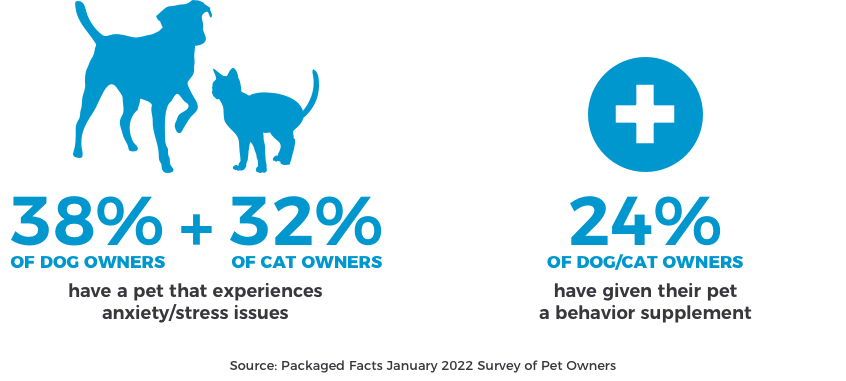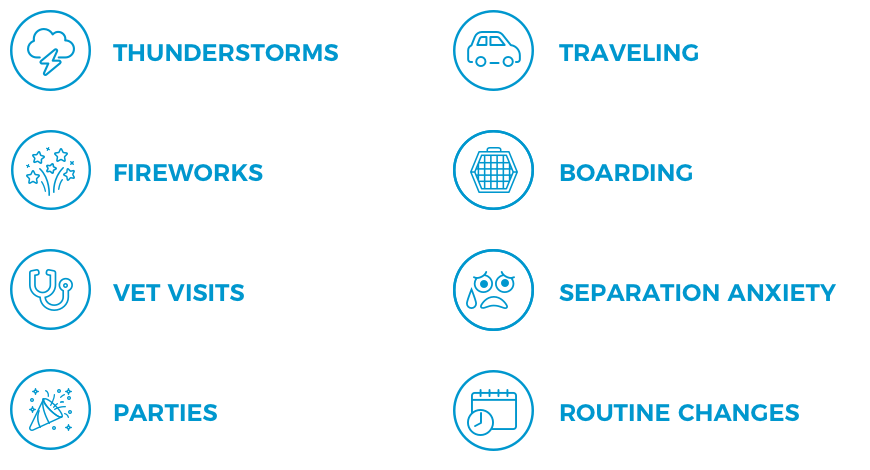Understanding Pet Stress
Does your cat or dog experience stress or separation anxiety?
Don't worry, you are not alone! Pet stress is a much more common problem than you'd think. In fact, behavioral problems are one of the top reasons for relinquishment of dogs and cats. Separation anxiety is also one of the most common behavior problems reported by dog owners.


Stress can even affect your pet’s health and quality of life. Frequent stress has been shown to cause stomach issues, excessive shedding and other health problems. That’s why it’s important to intervene if you notice a pattern of unusual behavior.
In most cases, you can easily recognize when your cat or dog is feeling anxious, stressed or fearful.
Pets respond to stress in a variety of ways including many of the behaviors shown below.


Most Common Signs of Stress in Dogs
DESTRUCTIVE BEHAVIOR — Scratching furniture or chewing shoes can be provoked by loneliness, boredom or stress.
EXCESSIVE BARKING AND GROWLING — Dogs often respond to stress by vocalizing their fear or anxiety.
DIGESTIVE DISTRESS (I.E. DIARRHEA) — Stressful stimuli can irritate the GI tract and lead to accidents, diarrhea or constipation.
EXCESSIVE DROOLING, PANTING AND PACING — Stress causes a rise in body temperature and an increase in saliva production and sweat.
REDUCED APPETITE — If your pet loses interest in food, it could be a sign of stress or an underlying health issue.
EXESSIVE SHEDDING — During vet exams, dogs will shed more than usual as a response to discomfort.
AVOIDANCE — Dogs are social creatures by nature. If your dog is hiding behind furniture or isolated, it might indicate fear or anxiety.
Most Common Signs of Stress in Cats
AGGRESSIVE BEHAVIOR — Multi-cat households can create an environment that leads to demonstrations of aggression.
MARKING OUTSIDE THE LITTER BOX — Your cat is trying to tell you something by not using the litter box.
HIDING OR ISOLATION — Hiding under the bed isn’t a personality quirk but a sign of stress in cats.
EXCESSIVE GROOMING OR SCRATCHING — Compulsive grooming or scratching is a manifestation of stress or anxiety.
EXCESSIVE VOCALIZATION — Cry for help? Frequent “meows” signal that your fur ball is stressed.
REDUCED APPETITE — Cats don’t diet. If your cat isn’t eating like usual, it could be a response to stress.






